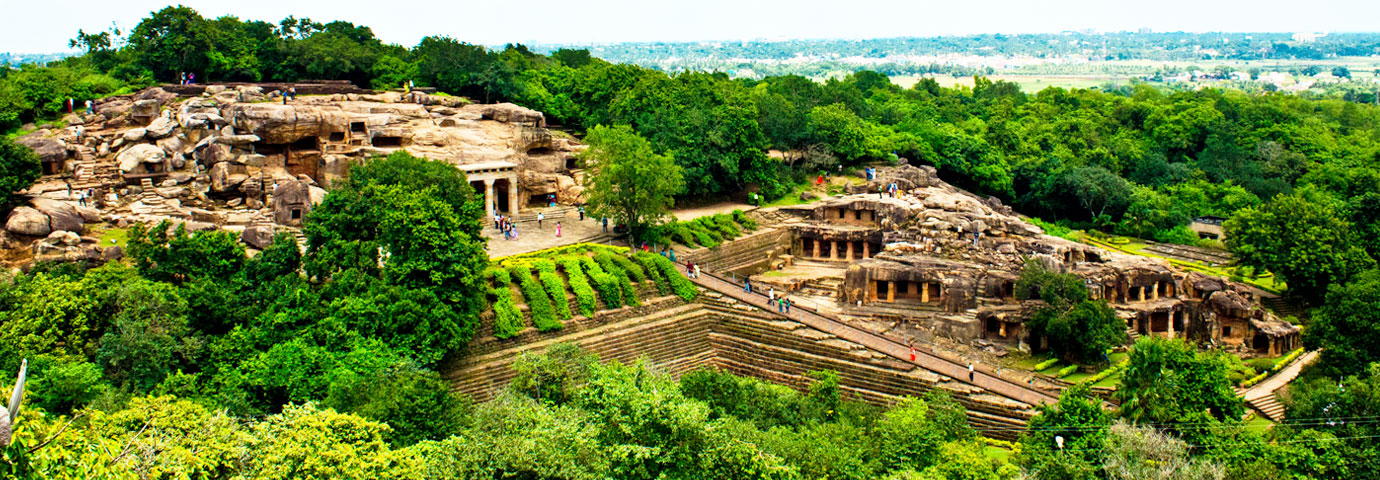Situated 90 kilometers to the northeast of Bhubaneswar are the isolated hills of the Assia range-Lalitagiri, Ratnagiri and Udayagiri. These hills possess the ruins of the most unique Buddhist monastic complex in the world.
Location
Lalitagiri is situated at a distance of 10 kilometers beyond the River Virupa. Although earlier excavations had brought to light the importance of this complex, recent excavations have yielded some evidence of a more ancient Buddhist complex. On the basis of iconographical similarities, the chronology of this site now dates back to the Sunga period, i.e. the second century BC. If this is to be believed, then Lalitagiri could be considered as one of the earliest Buddhist establishments in the world. Among the many noteworthy discoveries at this site is an ancient stupa containing relics preserved in caskets of stone. Its antiquity and its silver and gold contents have led to speculations that these are relics of Lord Buddha. Further findings of black polished inscribed pieces of pottery of Ashokan Brahmi script and a number of inscriptional evidence such as Kushan inscriptions, ornamental Brahmi etc. have corroborated in establishing Lalitagiri as a flourishing Buddhist center of the second century BC.
Tourists Attractions
The monuments unearthed at Lalitagiri are unique. The most important edifice of the Lalitagiri complex so far discovered are the ruins of an apsidal temple located in a strategic place surrounded by monasteries and stupas. These temples were constructed near Mathura and Taxila as well as on the Udayagiri hill near Bhubaneswar around the second century BC. Iconographically, Lalitagiri sculptures resemble Java and Southeast Asian prototypes. The Buddhist images at Lalitagiri are gigantic. Curling lips, dangling ears, elongated faces and sloping foreheads are some of the outstanding iconographical features of these Buddhist images.
Ratnagiri and Udayagiri belong to a much later phase. Ratnagiri is separated from Udayagiri by the river Kimiria. It is said that Ratnagiri and Udayagiri were the nucleus of tantric Buddhism and it was from here that Buddhism spread to other parts of India and the world. The antiquity of tantric tradition in Orissa is corroborated by the discovery of a fragmented stone inscription containing a Buddha tantra, which on Paleographic grounds, can be dated to the sixth century AD. In the seventh century AD, its importance as the center of Vajra Yana was considerable enough to attract Saharapada, the high priest of Nalanda, who became one of the first gurus to preach the tantra doctrine openly to the laity. From Orissa, Mahasidha Saraha traveled to Maharashtra and is given credit for introducing the Tantra Yana to Ellora and western India.
The excavation at Ratnagiri has revealed the remains of an imposing stupa, two quadrangular monasteries, a single winged monastery, eight temples, a large number of small stupas, sculptures, and architectural pieces indicative of an establishment that can be compared with the major Buddhist sites in the world. The site also yielded a rich crop of antiquities. Particularly noteworthy are the bronze and stone images of the Buddha and a host of idols of the Buddhist pantheon. A large head of the Buddha found on top the hill indicates the colossal nature of the original images. The artist has wonderfully reflected the inner mediation on the face by such devices as half open eyes.
Both the monasteries impress the visitors as great monuments by their sculptural wealth and architectural grandeur. The rear wall of their front porches with an exuberance of sculptural figures and decorative patterns present a rare texture unparalleled in India. The exquisitely carved chlorite doorframe with Gaja-Lakshmi on the lintel and bands of floral motifs and creepers of exceptionally neat workmanship on the jambs is the most splendid of its kind.
The nucleus of the complex dates from about the fifth century AD and it witnessed a phenomenal growth till the 12th century AD. It continued to be an important center till about the 16th century. During this period, it played a significant role in disseminating Buddhist religion and culture.
Udayagiri hill is situated about five kilometers southwest of Gopalpur on the Virupa River. The hill contains two spurs forming a sloping terrace, which is covered with extensive archeological remains. At the foot of the hill there is a colossal image of Lokesvara holding a large lotus. Two separate inscriptions are found incised on it. Paleographically, the inscriptions can be dated to the eighth century AD. The peak of the hill contains broken pieces of sculptures and the ruins of ancient structures. Two four-armed images of Jatamukuta Lokesvara are also seen on this hill. A little to the south from the image, a colossal Buddha sitting in bhumisparsa mudra can be seen carved in several pieces of stone. Many sculptures from Udayagiri hills have been removed to the museum in Patna.
Cuttack, the largest city of Orissa is at a distance of around 70 km from Ratnagiri, 60 km from Udayagiri, and 55 km from Lalitagiri. There are regular buses available to complete this circuit.


